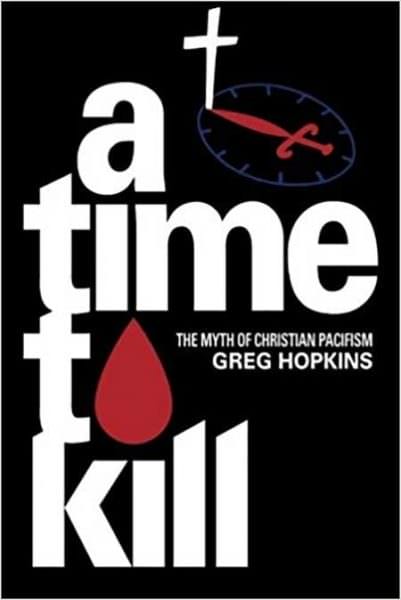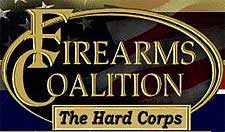

Buckeye, AZ –-(Ammoland.com)- Regardless of your faith, or lack thereof, Biblical teachings frequently play into discussions about self-defense and disarmament, and this book provides strong arguments for pushing back against the widespread notion that Jesus would expect his followers to passively accept evil acts.
Although Jesus has often been portrayed as a pacifist who would allow bad things to happen – such as His crucifixion – that image is a misunderstanding of Jesus and of His mission. Much of the Biblical doctrine of force comes directly from the Old Testament – the Jewish Tanakh – which is the foundation of our Judeo-Christian system of laws.
When and whether a Christian might use deadly force is a debate that goes back to the earliest days of Christianity. Can a Christian use deadly force in a way that does not violate the tenets of his faith? When? Under what circumstance? The default position for many gun owners in the conservative evangelical tradition has been to hope that Jesus would not condemn defending ourselves and our family, based on Luke 22:36 (“and he who has no sword, let him sell his garment and buy one”). And then we hope for the best, because we aren’t going to stand aside and let our families or our homes be violated by criminals. If that be sin, make the most of it, and let grace abound.
A Time to Kill: The Myth of Christian Pacifism
In A Time To Kill Greg Hopkins brings biblical backup to that visceral instinct to defend. That instinct, according to Hopkins, is the biblical position. One verse that seems to drive Hopkins’ entire narrative is Leviticus 19:16b “You must not stand idly by when your neighbor’s life is at stake.” (New English Translation).
The author is well-equipped to serve as a guide to the spiritual aspects of applying deadly force. A lawyer by training, Hopkins has served as a reserve police officer, a prosecutor, and has trained police officers in legal aspects of the use of force. He has received firearms training from the FBI Academy and Massad Ayoob.
Add to the legal and firearms knowledge a deep knowledge of scripture which Hopkins displays throughout the book, and it becomes clear that A Time To Kill is an important defense of being an armed Christian.
Hopkins takes the reader on a tour of examples of force being used in the Bible, from Abram in Genesis gathering a posse to rescue his kinsman Lot, to a brief image of Jesus at the head of an Army of God at Armageddon. He thoroughly explores the idea of Jesus as a pacifist, and shows the problems with that idea.
A Time To Kill is clearly organized with a solid structure. The first section is devoted to self-defense and begins to establish the idea that self-defense is not only good, but that Christians may be shirking a duty if they passively give in to evil. He talks about the difference between righteous self-defense, and vengeance. He also explores alternative self-defense methods, notably pepper spray, a tool for which he holds instructor credentials.
The second major section deals with Christians being in the military and police. They are the arms of government which is, according to the Bible, ordained by God. Military and law officers need to discharge their duties in the light of biblical principles. Hopkins explores the differences between their roles, but also the similarities, and devotes considerable space to recovery from a traumatic experience.
After an intermission consisting of a fictionalized account of Abram preparing to rescue his kinsman Lot, Hopkins next gets into the law – not biblical law, but secular – with particular focus on those who break it – criminals. In this section Mr. Hopkins draws heavily on Proverbs with its many references to the “fool” and the “rebellious man.” He hammers the point that a criminal intent on a criminal act is unlikely to be swayed by passive, pacifist non-resistance.
The next section is the meat of the book. Titled “Jesus, Self Defense, and Pacifism.” In this section he lays out the case that Jesus was not a pacifist and that he would not expect pacifism from his followers. Reading this section, it becomes clear that the chapters leading up to this one were building a solid foundation for this very important structure.
Finally, the book digs into the death penalty, making a solid case for the ultimate punishment the state can inflict A Christian facing jury duty in a capital case would be well advised to refer to this section.
Self-defense and deadly force can be a thorny issue, particularly with the waters muddied as they are today by popular notions of what it means to turn the other cheek. An important part of any defensive firearms training is a focus on mindset – being prepared both mentally and spiritually to do the right thing at the right time and to have confidence in one’s actions. Armed with knowledge from A Time To Kill, an armed Christian will be better prepared for the very real battle between Good and Evil that is armed self-defense.
Every armed believer needs to learn what Mr. Hopkins has to teach.
About Jeff Knox:
Jeff Knox is a second-generation political activist and director of The Firearms Coalition. His father Neal Knox led many of the early gun rights battles for your right to keep and bear arms. Read Neal Knox – The Gun Rights War.
The Firearms Coalition is a loose-knit coalition of individual Second Amendment activists, clubs and civil rights organizations. Founded by Neal Knox in 1984, the organization provides support to grassroots activists in the form of education, analysis of current issues, and with a historical perspective of the gun rights movement. The Firearms Coalition has offices in Buckeye, Arizona and Manassas, VA. Visit: www.FirearmsCoalition.
